Mandolin For Fiddlers
Introduction
Here’s a lesson for fiddlers who want to learn the mandolin.
It’s a little easier for fiddlers to learn mandolin because both instruments have the same strings: GDAE. This means the left-hand finger patterns are the same on each instrument.
If you’re a fiddle player, then learning mandolin is a simpler translation process than learning something totally different like drums. Kind of like going from Spanish to Italian. If you’re a fiddler trying to learn the drums, then it’s more like going from Spanish to Mongolian.
The first time I picked up a mandolin, I was amazed to discover that I could play all the music I already knew on it: classical, fiddle tunes and jazz melodies.
3 skills you need to learn for the Fiddle to Mandolin transition:
- Picking
- Strumming
- Chords
Big takeaway: You can start learning these skills RIGHT NOW with your fiddle.
So pick up your fiddle and let’s get started!
Plucking with the thumb
Hold the fiddle in mandolin position. Then pluck open strings with your thumb. Just play around with plucking in your own way. Then try to pluck scales and tunes you know. In the video I’ll use Oh Susannah (in G) as an example.
Thumb-strumming
Brush the side of your thumb against the strings in a downward motion. These are downstrokes. They’re the mandolin equivalent of downbow. Upstrokes are like upbows on the fiddle. Play upstrokes by lightly brushing your thumbnail against the upper strings. This is a little harder than downstrokes.
Thumb-strumming will help you get the physical feel for playing mandolin. Alternate between downstrokes and upstrokes. Extend the practice by practicing rhythms:
- Boom-chuck
- A simple downstroke on the lower strings followed by an upstroke on the upper strings.
- Swing pattern: Long short
- Tucka
- All downstrokes
- Down/up
- Hoedown or “taters”
- Long short short
- Down Down up
- Triplets
- Down/up/down | Up/down/up
Here are some fiddle rhythms to practice with:
Are you ready to begin your fiddle journey with me?
Sign up for a free two-week trial
You’ll get full access to all courses and group lessons. Plus, I’ll send you some free lessons tailored to your current skill level.
Learning mandolin chords
Let’s learn some beginner chords.
G Major: G0|D0|A1|EL2
Play each note separately. This is called an arpeggio in fancy music-speak. It’s a great tool for practicing chords because it helps you to hear which notes are not ringing properly. If each note sounds good when played separately, then the chord will most likely sound good.
Now play the full chord downstrokes. If you’ve already learned double stops chords from me, then you’ll notice that there are three 2-note chords nicely contained within the 4-note mandolin chord:
- G0D0
- D0A1
- A1EL2
Go back to the full mandolin chord to hear the big picture.
Practice strategy: alternate between arpeggios (single notes) and the full chord.
C Major
Once you can play G Major, then it’s pretty easy to learn C major. Simply move the same finger shape (1|L2) across the strings from A and E strings to D and A strings.
C Major: G0|D1|AL2|E0
You can easily find mandolin chords online. Here are some simple mandolin chords for you.
F Major
Notice that the F chord uses the same shape (1/L2) as G and C. Just shift the shape from D and A strings to G and D strings.
F Major: G1|DL2|A0|X
For a strict F major chord, don’t play the E string. Or, play open E to make a bittersweet F Major Seventh chord and longingly say “Ahhh.” 🤓
Thinking in shapes and patterns can help you learn music more easily. You can do a similar practice with Scale Shapes. Finding Patterns In Sheet Music
Easy Mandolin Chords
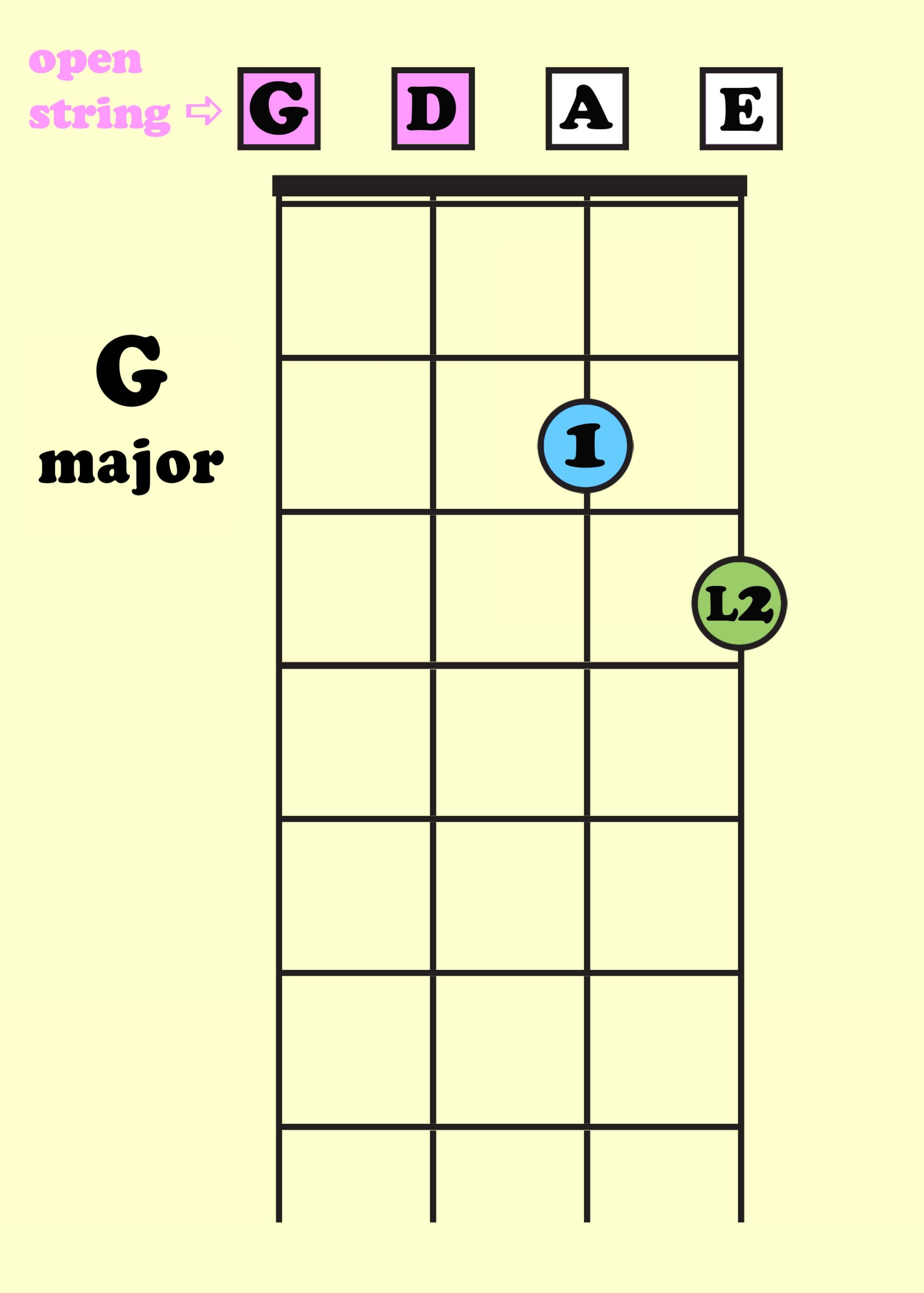
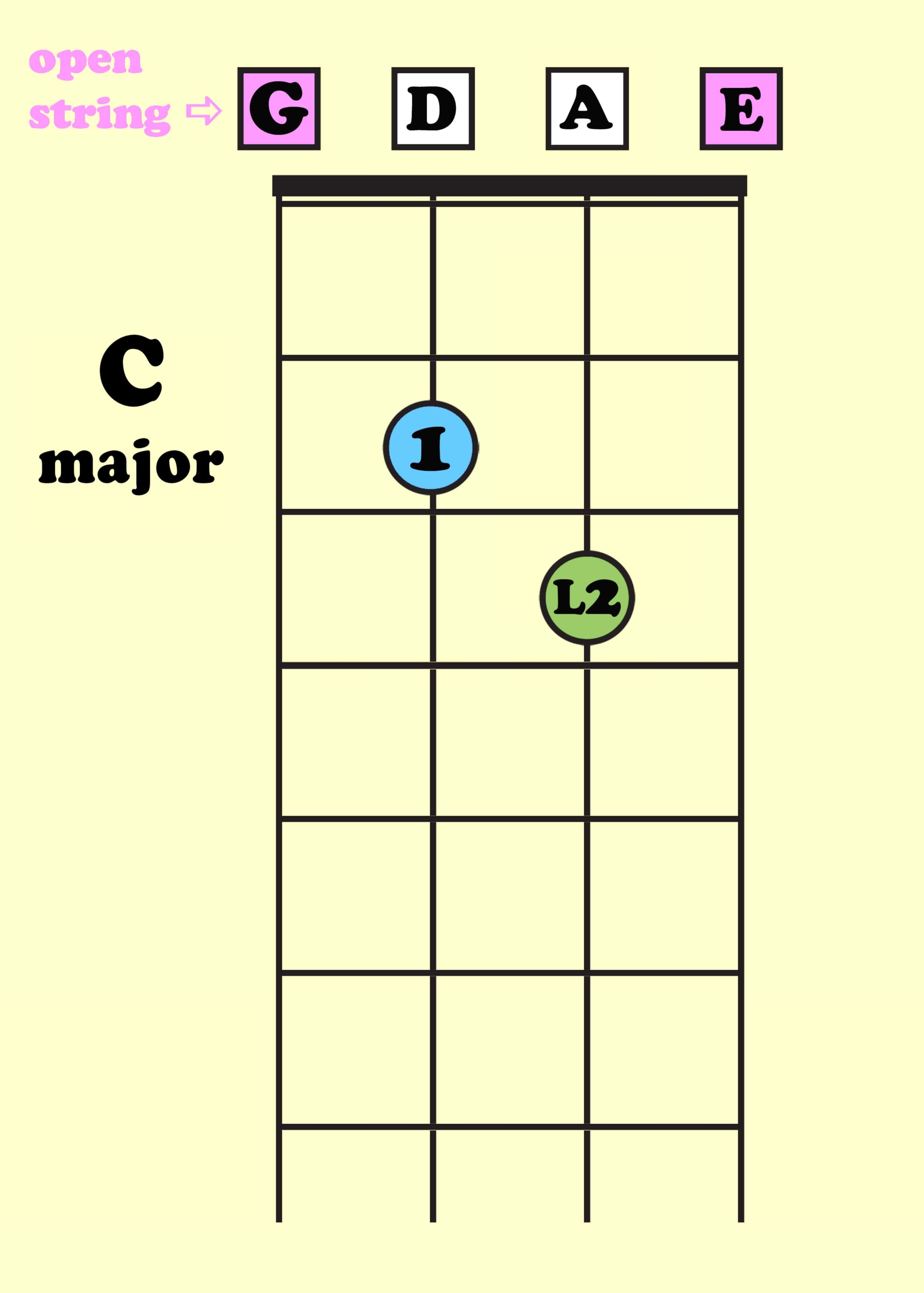
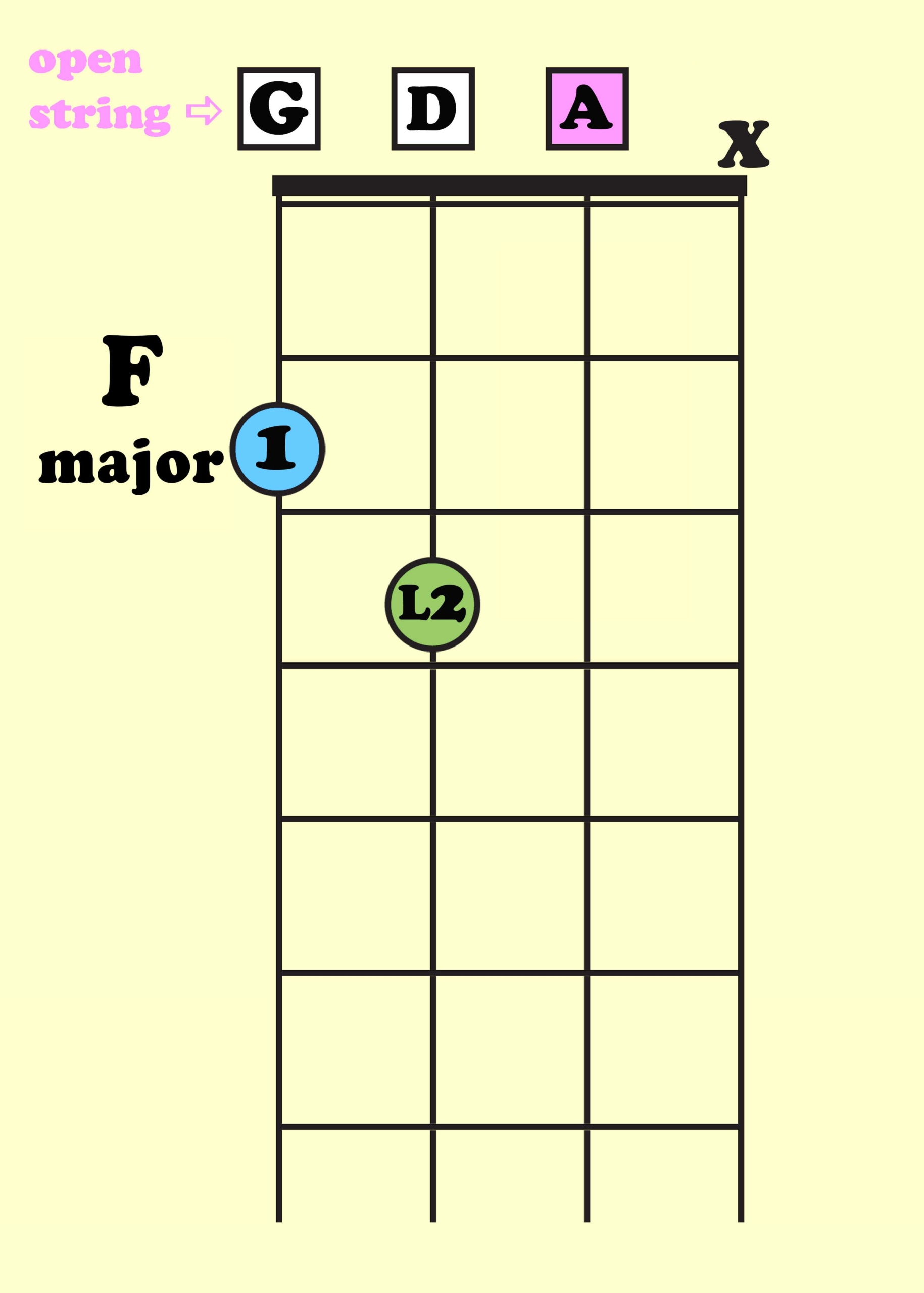
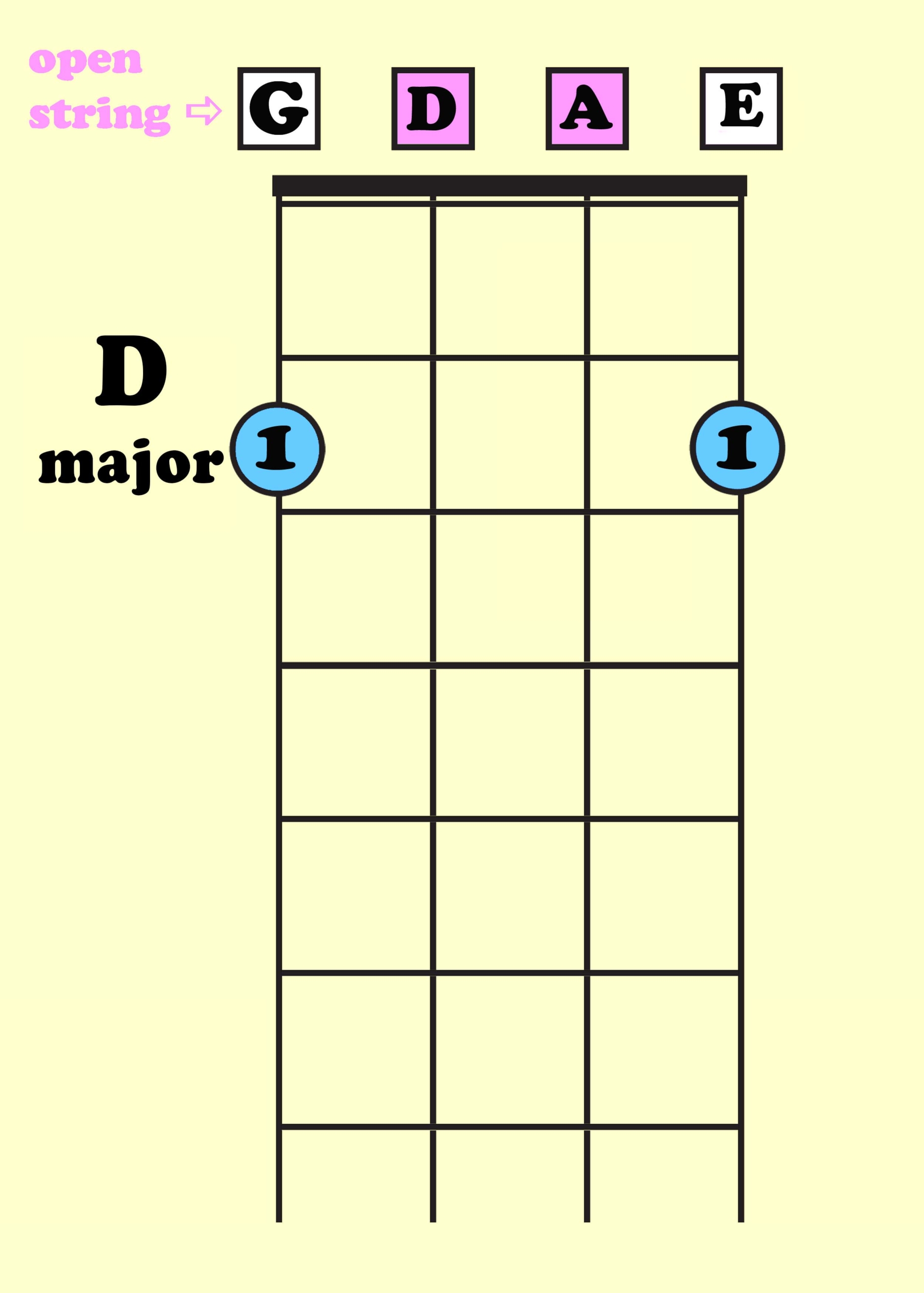
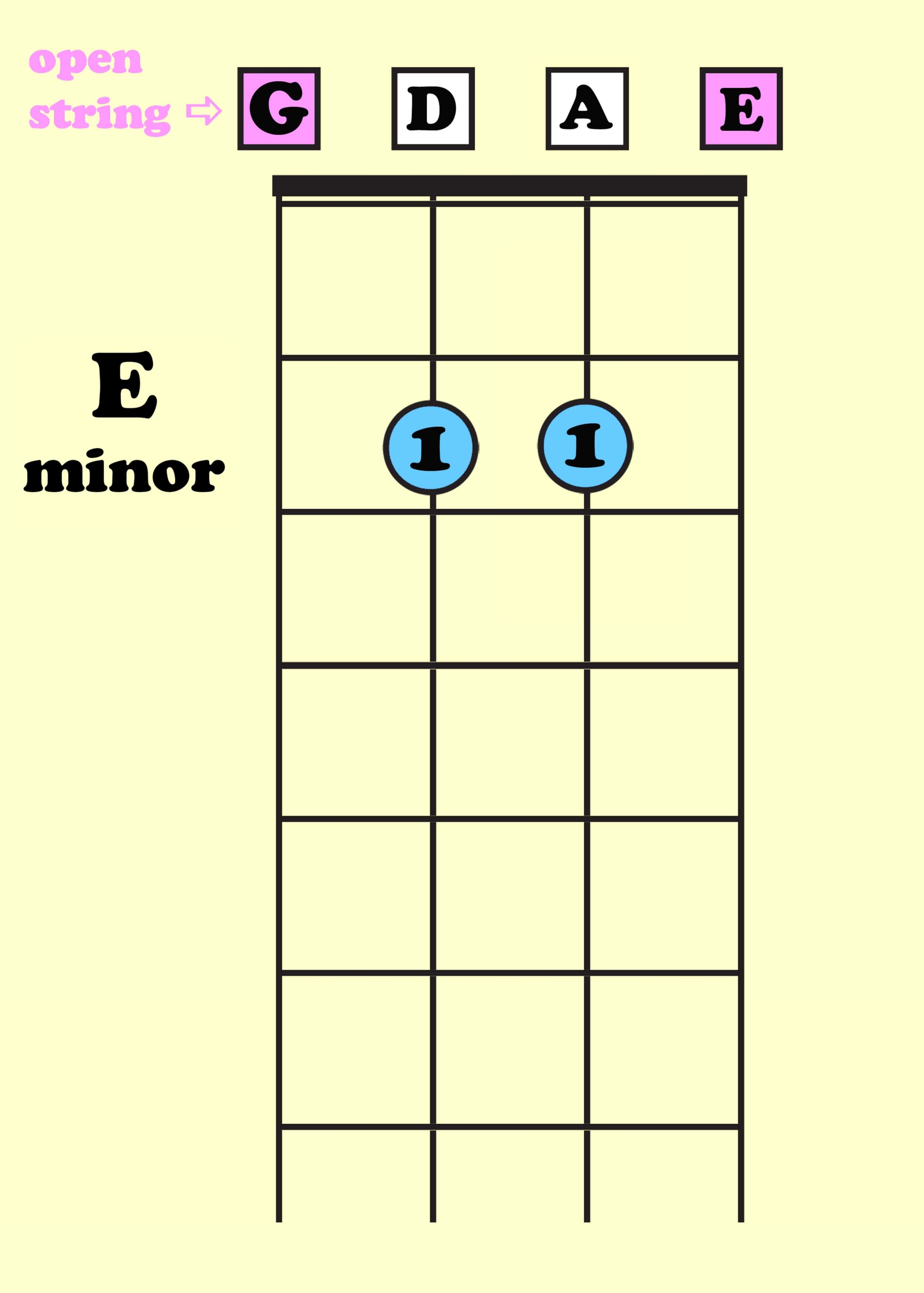
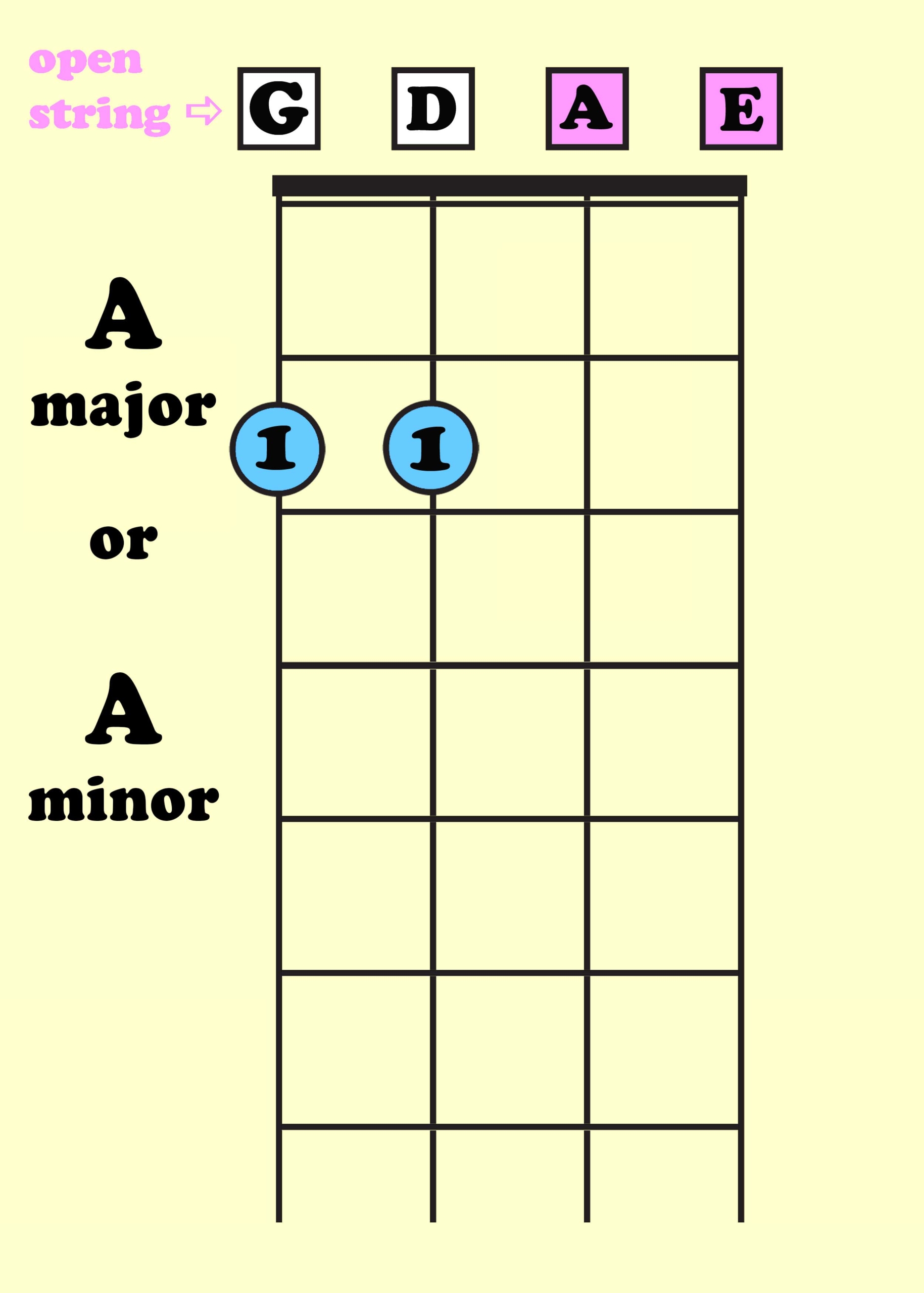
Picking exercises for Mandolin and Fiddle
Here’s a shorter video demonstrating different picking exercises.
Video examples
Old Town Road
There’s one chord progression throughout the song:
Em/G/D/C
I mix up how I play it for different parts. I also came up with a little riff to turn it around.
View this post on Instagram
Chord progressions
A chord progression is a pattern of 2 or more chords. Let’s learn a simple 2-chord progression:
C / G
This means we go from C major to G major in a continuous loop. It’s understood that these are major chords. Eventually you’ll learn minor chords which are written like this: Cm /Gm.
Here’s the key to learning progressions: Play each chord with a single strum, then slowly alternate between the chords. This gives your hand time to find the next chord. Eventually your transition time gets quicker. Practice strumming at a medium tempo (60-70 bpm). Follow this practice path:
- Whole notes
- Count 1-2-3-4 between chord changes
- Half notes
- Two counts between chord changes
- Quarter notes
- One count between chord changes
- Eighth notes
- Two chord changes per count
Play a song
Now you can play a simple song. Wihoo! Let’s return to Oh Susannah. Here’s the chord progression for the verse:
C | C | C | G
C | C | C G | C
Other songs have more chords, more complexity. But once you learn this, you can use the same process to learn chords for any song. This strategy will also help you learn and play chords on guitar or piano

Using a Pick
Now we’ll repeat everything we’ve done, but we’ll use a pick. This moves us closer to playing mandolin. If you don’t have a pick handy, then just make one by cutting up a credit card. You don’t really need that do you? Buy less, play and save more!
Hold the pick between your right thumb and index finger like this.
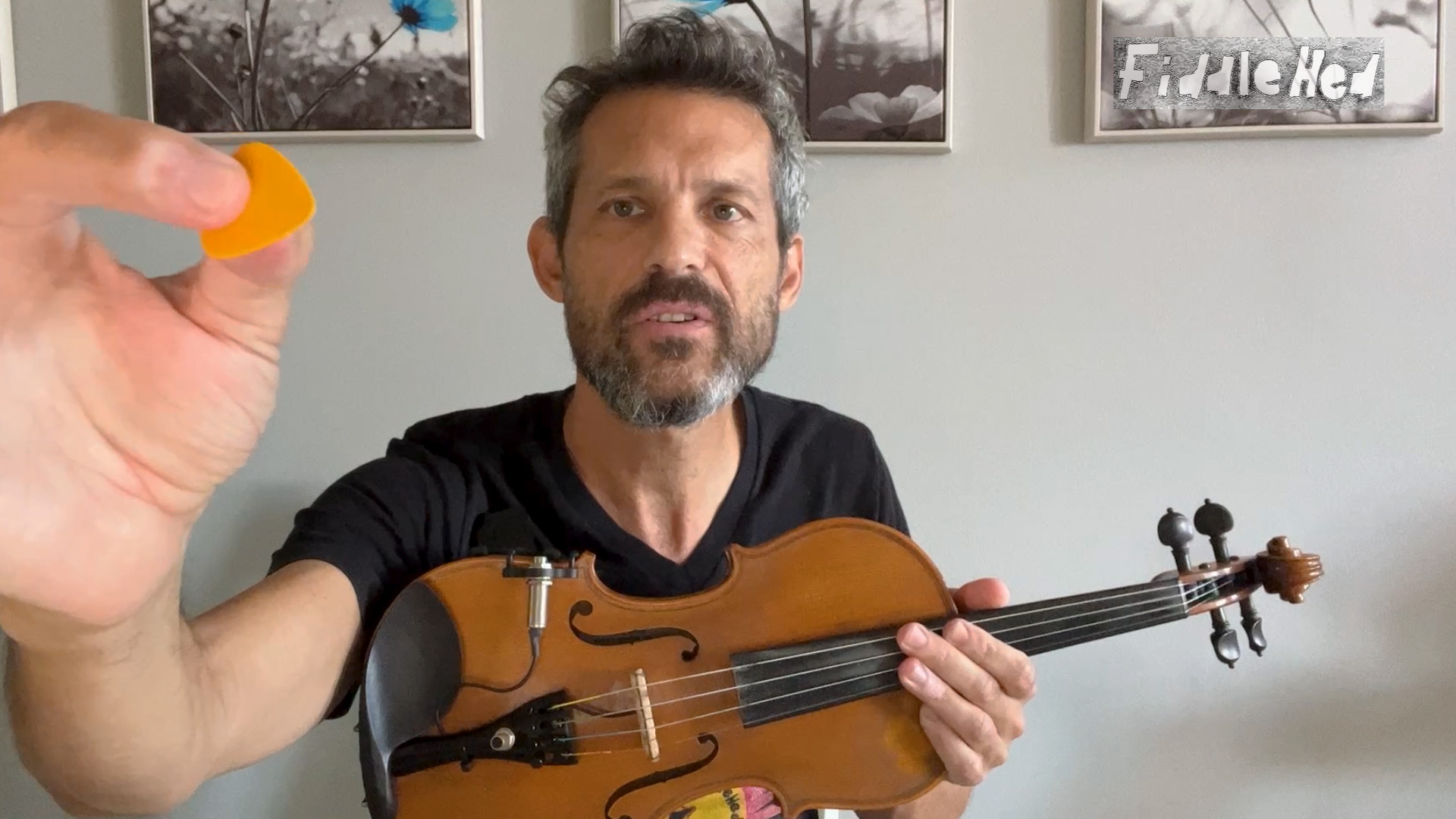
Do some air-picking, moving your wrist.
Then start picking on open D. Notice the difference between the pick and thumb.
Simple picking exercises (for fiddle or mando):
- Downstrokes on D
- Upstrokes on D
- Alternate on D
- String crossing: D to A
- Downstrokes
- Upstrokes
- Down on D, Up on A
- Peri-diddle: DDADAADA
- Skedaddle (3+3+2): ADDADDAD
- All four strings
- Downstrokes
- Upstrokes on D
- Down/up on each string (2 plucks)
- Alternate
- Extend all these exercises by adding fingering.
Not only does picking prepare you for playing mandolin, but it actually sounds good on the fiddle. You can get sounds that aren’t possible on the mandolin, like bluesy slides.
Strumming with the pick
Now practice strumming with the pick. Repeat the same practices you learned with thumb-strumming.
- Single strums
- Rhythms
- Single chords
- Chord progressions
- Songs
Mandolin practice
By the time you’ve done all this, maybe a mandolin will show up on your doorstep in a brown box or underneath the Christmas tree.
Take everything you’ve learned and practice it on a mandolin.
Of course, there’s a lot more you can learn about mando that’s beyond the scope of this lesson
- Tremolo
- Blending chords and melody
Thanks for watching!
Course progress
Return to top of Art of Fiddling >>
Leave a Reply
You must be logged in to post a comment.

Oh my gosh- I’ve been wanting to sing with my fiddle- the mandolin would be a great
solution…I lent one out from for restoration and it never came back- egads- but with your
help I feel I could acquire one and tackle this….because… I love to sing! hope to learn more!
Make lots of picks from those nasty credit cards!
https://www.amazon.com/Pick-Palooza-Guitar-Leather-Holder/dp/B012D6KT7M/ref=sr_1_7?crid=3GKFJ2Y3BN1NW&keywords=Credit+card+pick+maker&qid=1660926015&sprefix=credit+card+pick+maker%2Caps%2C2423&sr=8-7
mind blown
That was a fun lesson!!!!!!
Exciting stuff Jason!!! Got mandolin tuned up ready to get into the lesson.